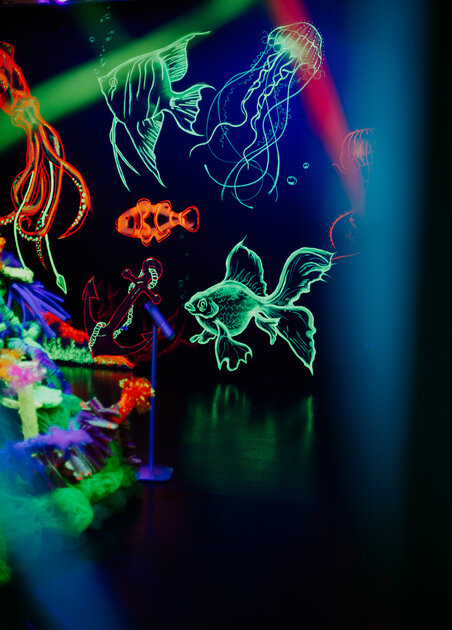Traditional museums attract visitors primarily with their valuable collections of exhibits. However, they are often unattractive to children due to their shape and lack of interaction possibilities. The situation is different at the first Funzeum in Poland, which opened in February of this year. in Silesia. A visit to this facility is like an exciting adventure, during which you can gain practical knowledge about the performance of selected phenomena in the field of physics or plastics, and experience extraordinary visual effects.
The Funzeum, as an extraordinary museum that brings together the world of education and entertainment, was designed on the basis of innovative ideas in creating the exhibition. Here we will not find collections arranged in galleries as in traditional museums, but spaces that stimulate the senses. When designing the facility, the focus was primarily on interaction and encouraging visitors, especially children and teens, to creatively explore the gallery.
The dominant theme in the multimedia exhibition is color and light. Funzeum shows through play how it occurs in nature, how it affects human life and how we use it in everyday life. On an area of approximately 4000 m2. There are over 50 multimedia facilities and many interactive elements that encourage active exploration and creative fun.
The tour begins in the color zone, where there are seven spaces in the seven colors of the rainbow. Visitors can learn from this part of the exhibition, among others, how pigments were once produced, how colors affect our well-being, and what the colors symbolize. Visitors can also see what mixing individual colors looks like in practice, using interactive fixtures such as ‘sliding glasses’ or ‘color projectors’. There are also references to the history of mankind, because human creativity knows no boundaries and some methods of obtaining permanent natural pigments are very interesting and interesting.
The next part of the Funzeum is dedicated to the exhibition related to light, its reflection and mirrors. In one of the rooms, for example, there is a giant prism on which visitors can admire in all its glory, understand its principle, and then at a table with smaller prisms they have the opportunity to split the light. The great educational value for students is the opportunity to experience real prisms, which allow them to turn a standard physics lesson into a fun experience. In the Floo region, on the other hand, there are murals depicting a variety of animals and plants that evolution has endowed with the ability to emit its own light.
The creative space of the facility is conducive to education. Aside from being able to experience different phenomena during the tour, Funzeum guests will also find answers to many interesting questions, such as: Why do the stars shine? What is luminosity? , What is the reflection of light? Or how and why rainbows arise? Funzeum combines the possibilities of digital technology with educational play with light and color. The idea for this unusual museum was based on the motto “We have fun while we teach, we learn while we have fun”.
The first Funzeum in Poland is located in Gliwice and covers an area of approximately 4,000 square metres, and was designed for modern education combined with fun.
Digital art museums are creating a new cultural and entertainment reality for the 21st century. It engages the senses, stimulates the imagination and provides unforgettable experiences, leading to the process of remembering and teaching. The first Funzeum in Poland was also created with this idea.







